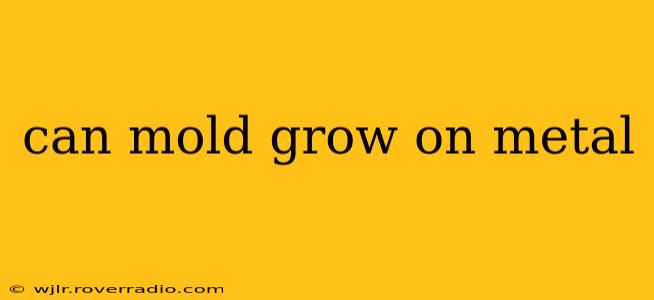Can Mold Grow on Metal? Understanding Mold's Requirements and Metal's Role
Mold, a type of fungus, requires specific conditions to thrive. While it's often associated with damp wood or drywall, many wonder: can mold grow on metal? The short answer is: it's less common than on porous materials, but it's not impossible. Let's delve deeper into the factors that influence mold growth on metal surfaces.
What Does Mold Need to Grow?
To understand why mold might—or might not—grow on metal, we need to examine its basic needs:
- Moisture: Mold requires a consistently moist environment. This moisture can come from leaks, condensation, or even high humidity.
- Food Source: Mold feeds on organic matter. This includes dust, dirt, decaying wood, paper, and even some types of paints.
- Temperature: Mold thrives in temperatures generally between 68°F and 86°F (20°C and 30°C).
- Suitable Surface: While mold can grow on various surfaces, its growth is significantly influenced by the surface's porosity and ability to retain moisture.
Why Metal Is Less Prone to Mold Growth
Metals, unlike wood or drywall, are generally non-porous. This means they don't readily absorb moisture. The smooth surface also prevents mold spores from easily attaching and establishing a colony. However, there are exceptions.
Can Mold Grow on Metal? Situations Where It Might Happen
Even though metal is less susceptible, certain circumstances can create conditions favorable for mold growth:
- Presence of Organic Matter: If dust, dirt, or other organic debris accumulates on a metal surface and remains damp, it can provide a food source for mold. Think of a rusty, neglected metal object outdoors. The rust itself is a form of metal degradation, providing a suitable environment.
- Persistent Moisture: Prolonged exposure to water, such as a persistent leak near a metal pipe, can create a sufficiently moist environment for mold to establish itself. The moisture might not be absorbed into the metal itself, but it can create the necessary conditions on adjacent surfaces or within accumulated debris.
- Type of Metal: Certain metals might corrode or oxidize, creating a surface more conducive to mold growth. The resulting corrosion products might provide a more suitable foothold for mold spores.
How to Prevent Mold Growth on Metal Surfaces
Preventing mold growth on metal surfaces involves addressing the fundamental requirements for mold:
- Maintain Cleanliness: Regularly clean metal surfaces to remove dust, dirt, and other organic matter. This eliminates potential food sources.
- Control Moisture: Ensure proper ventilation and promptly address any leaks or sources of excessive moisture. This is especially important in areas with high humidity.
- Proper Maintenance: Regularly inspect metal surfaces for signs of corrosion or damage. Repairing any damage prevents the creation of environments that can encourage mold growth.
What about stainless steel? Is it mold-proof?
While stainless steel is highly resistant to corrosion and less likely to support mold growth than other metals, it's not entirely impervious. If consistently wet or covered in organic matter, mold can still potentially grow. Regular cleaning remains crucial.
In Conclusion
While it's less likely than on porous materials, mold can grow on metal under specific circumstances. By understanding mold's requirements and taking preventative measures, you can significantly reduce the risk of mold growth on metal surfaces in your home or workplace. Consistent cleaning and moisture control are key to keeping your metal surfaces mold-free.
